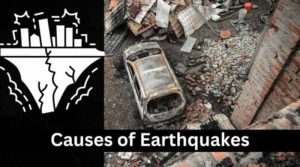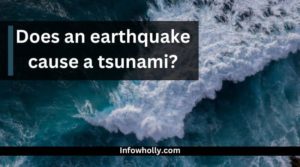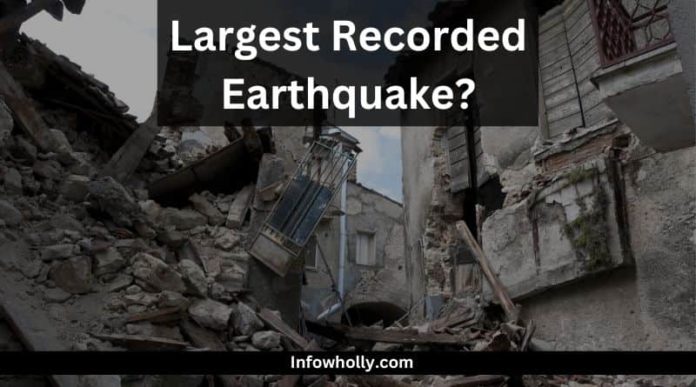What Country Has The Largest Recorded Earthquake
The largest earthquake ever recorded happened in 1960 in Chile and registered an incredible 9.5 magnitude on the Richter scale. This devastating natural disaster killed over 5,000 people, destroyed 2,000 homes and left a million people homeless.
The Largest Earthquake Ever Recorded: Causes, Effects, and Tips for Survival
The largest recorded earthquake was caused by the subduction of the Nazca plate under the South American plate and resulted in widespread damage and destruction, including tsunamis that affected coastal regions as far away as Hawaii and Japan. The earthquake and its aftermath led to the deaths of approximately 5,700 people and left over 2 million homeless. It remains the largest earthquake ever recorded in human history.
Some of the top largest earthquakes recorded in history include the 1964 Alaskan earthquake, which had a magnitude of 9.2; the 2004 Sumatra earthquake, which had a magnitude of 9.1; the 2011 Tohoku earthquake in Japan, which had a magnitude of 9.0; and the 1952 Kamchatka earthquake, which had a magnitude of 9.0. These earthquakes, and many others, have resulted in significant damage, loss of life, and economic impacts, highlighting the importance of continued research and preparedness efforts aimed at mitigating the effects of these natural disasters.
But what caused such a catastrophic event? In this blog post, we will discuss the causes of the largest earthquake ever recorded, the effects it had on the region, and tips for surviving earthquakes in general. By understanding the causes and effects of the largest earthquake, we can better prepare ourselves for any future seismic activity.
The most common Causes of Earthquakes

Earthquakes are one of the most destructive forces of nature, and their effects can be felt far beyond the epicenter of the tremors. The largest recorded earthquake in the world was a magnitude 9.5 earthquake that struck Chile in 1960, which caused widespread destruction and a devastating tsunami.
The primary cause of earthquakes is the movement of tectonic plates in the Earth’s crust. These plates are in constant motion due to convection currents in the mantle beneath them, and when they move, they can cause stresses on the surface that create quakes. Earthquakes can also be caused by volcanic activity, where the release of pressure causes seismic activity or man-made activities such as mining or frocking.
It is important to be aware of the causes of earthquakes and prepare for them to reduce the risk of damage and casualties. Knowing how to identify the warning signs of an impending earthquake and responding quickly to them is essential for survival.
How does an earthquake cause a tsunami?

Tsunamis are devastating waves that can be caused by a variety of factors, but the most common cause is an earthquake. Earthquakes create powerful vibrations that travel through the earth’s crust, causing the ocean surface to rise and fall in large swells. The largest recorded earthquake in the world was a magnitude of 9.5 in 1960 in Chile. This massive quake had far-reaching effects, causing a tsunami that wreaked havoc on coastal areas in the Pacific Ocean.
The effects of the earthquake can be felt from several thousand kilometers away from the epicenter. Even distant locations can experience a tsunami due to the sheer force of the seismic activity. Tsunamis travel at high speeds across the ocean, with some reaching speeds of up to 800 km/h (500 mph). As it travels, it can pick up sediment, rocks, and other debris, creating a large wave that can grow even larger when it approaches shallow waters near coastlines.
When a tsunami reaches land, it can bring devastation as it crashes against buildings and other structures, often destroying everything in its path. Tsunamis can also cause flooding, as they fill up areas with water and deposit debris along the coastline. In some cases, tsunamis can have disastrous long-term effects on local ecosystems, including loss of fish stocks and damage to coral reefs.
Fortunately, there are steps people can take to prepare for an impending tsunami. Evacuating to higher ground or inland is often the best option as tsunamis tend to move quickly and cover a wide area. It is also important to know the warning signs of an impending tsunami, such as sudden ocean retreat or strong earthquakes, to be able to take action quickly.
Difference between an earthquake and a tremor
Earthquakes and tremors are both seismic events, however, they have distinct differences. An earthquake is a sudden, rapid shaking of the ground caused by the release of energy within the Earth’s crust. The largest recorded earthquake in history was an earthquake in Chile in 1960 with a magnitude of 9.5 on the Richter scale. It had devastating effects on the region, causing property damage and killing thousands of people.
Tremors, on the other hand, are smaller than earthquakes and are usually caused by surface faults or volcanic activity. They generally occur over a much shorter duration than earthquakes and do not cause as much damage or destruction. Tremors can also be caused by human activities such as mining, blasting, or drilling. The effect of a tremor is usually minimal and does not cause widespread destruction like an earthquake can.
Difference between an earthquake and an aftershock
An earthquake is the largest recorded earthquake to occur naturally in the world and is caused by a sudden release of energy in the Earth’s crust. This energy creates seismic waves, which are responsible for the shaking and trembling felt during an earthquake. The effect of an earthquake can be felt over large distances and can cause immense destruction depending on its magnitude.
On the other hand, an aftershock is a smaller tremor that follows an earthquake. Aftershocks occur in the same area as the larger earthquake and usually last for a shorter period. Aftershocks usually happen shortly after the initial quake and often diminish in intensity over time. While aftershocks may cause further damage, they are generally considered less destructive than the main shock.
Richter scale and its uses to measure earthquakes
The Richter scale is a logarithmic scale used to measure the magnitude of earthquakes. It is named after Charles F. Richter, who developed it in 1935 at the California Institute of Technology. The scale is a numerical value assigned to an earthquake based on the size of the seismic waves it produces. The Richter scale runs from 0 to 10, with an increase of one whole number signifying a ten-fold increase in the amplitude of the seismic waves.
The largest recorded earthquake in history was a magnitude 9.5 earthquake that struck Chile on May 22, 1960. This earthquake had a devastating effect, killing over 2,000 people and damaging thousands of homes. It also triggered powerful tsunamis that caused destruction along coastal areas of the Pacific Ocean. Earthquakes of this size and magnitude can cause immense destruction, so the ability to accurately measure them is essential for predicting and preparing for their effects.
Using the Richter scale, scientists are able to estimate the energy released by an earthquake, which helps them determine the likely extent of damage it will cause. By measuring seismic waves over time, they can gain a better understanding of the depth and duration of an earthquake and use this information to make more accurate predictions about potential destruction. This data can be used to help create better public safety plans and alert systems for natural disasters such as earthquakes.
Earthquakes occurrence around the world
The largest recorded earthquake in the world happened on May 22, 1960, in Valdivia, Chile. The magnitude of this earthquake was 9.5, which is the highest magnitude ever recorded. On average, an earthquake of a magnitude of 4 or greater happens every day around the world. There are also numerous smaller quakes that are not noticed by humans but are recorded by seismographs.
The effects of an earthquake can be devastating, depending on its size and location. Earthquakes cause landslides, tsunamis, and other secondary disasters that can cause loss of life and property damage. The aftermath of an earthquake can also cause long-term disruption to life in affected regions, such as prolonged power outages and water shortages.
Most dangerous effects of an earthquake
Earthquakes are unpredictable and can cause destruction in many ways. Some of the most dangerous effects of an earthquake include landslides, tsunamis, floods, and fires. Earthquakes can also cause destruction by breaking gas and water lines, destroying buildings and bridges, and causing damage to roads and railways.
Additionally, earthquakes can be accompanied by strong ground shaking, which can cause further destruction. Furthermore, aftershocks can occur long after the initial quake has passed. This can cause further destruction and delay relief efforts. Lastly, seismic waves can be sent out from an earthquake, which can cause destruction to other regions near and far away from the epicenter. It is important to be aware of the potential danger of an earthquake so you can take the necessary precautions to ensure your safety.
Warning signs of an impending earthquake
While it’s impossible to predict earthquakes, there are warning signs that can help you prepare for one. These signs can include small tremors, changes in groundwater levels, animals behaving strangely, and changes in the landscape.
Small tremors are the most common signs of an impending earthquake. These tremors occur just before the main quake and often last just a few seconds. It’s important to note that not all tremors are earthquake-related, as they can also be caused by other geological events such as volcanoes.
Animals have been known to sense an impending earthquake due to their sensitive hearing and smelling capabilities. It’s not uncommon to see animals acting strange just before an earthquake occurs, such as fleeing in large groups or congregating around water sources.
Groundwater levels can also change prior to an earthquake. These changes occur when the surrounding rocks and sediments compact and cause a shift in the water table. If you notice significant drops or rises in your local water table, it’s best to take precautions immediately.
Lastly, changes in the landscape can sometimes indicate an upcoming quake. This includes cracks appearing in roads or walls and new fissures forming in the ground. If you notice any of these changes, it’s best to evacuate to a safe area as soon as possible.
By understanding the warning signs of an impending earthquake, you can better prepare yourself and your loved ones for the worst-case scenario. With a bit of knowledge and preparation, you can minimize the effect of an earthquake and ensure that everyone is safe and sound.
What should people do to prepare for an earthquake?
It is important to be prepared for a potential earthquake, as it can happen at any time. When an earthquake strikes, there are certain things you can do to reduce the risk of injury and property damage.
First, make sure your home is properly secured. Make sure all items such as bookshelves, pictures, or TVs are securely fastened to the wall. It is also important to anchor heavy furniture, such as dressers and armoires, to the wall. Make sure any gas or water lines are well secured and check smoke detectors and fire extinguishers.
It is also important to have an emergency kit prepared in case of an earthquake. This should include a first aid kit, non-perishable food and water, flashlights, a battery-powered radio, extra batteries, and cash. Keep these items in a waterproof bag and store them in a safe place.
When an earthquake occurs, drop to the ground and take cover under a sturdy piece of furniture, such as a desk or table. If there is no shelter available, get as close to an interior wall as possible. Stay away from windows, fireplaces, and other potentially dangerous items. Do not attempt to leave your building until the shaking stops and it is safe to do so.
By following these tips and being prepared for an earthquake, you can reduce the potential for injury and property damage.
What can be done to minimize the damage caused by an earthquake?
There are several things that can be done to minimize the damage caused by an earthquake:
-
Prepare an emergency kit:
Create an emergency kit that includes essentials such as food, water, a first-aid kit, a flashlight, a radio, and important documents. Make sure everyone in the household knows where the kit is located.
-
Reinforce structures:
Buildings can be reinforced to make them more earthquake-resistant. This includes adding steel braces, anchors, and cross-bracing to the structure.
-
Secure heavy objects:
Heavy objects such as bookshelves, televisions, and cabinets should be secured to the wall to prevent them from toppling over during an earthquake.
-
Have an emergency plan:
Create an emergency plan that includes a designated meeting place outside the home and an evacuation plan if necessary.
-
Stay informed:
Stay informed about earthquake activity in your area and pay attention to official warnings and alerts.
-
Conduct earthquake drills:
Conduct earthquake drills with your family or workplace to practice what to do in the event of an earthquake.
-
Retrofit older buildings:
If you live or work in an older building, consider retrofitting it to make it more earthquake-resistant.
Overall, the best way to minimize the damage caused by an earthquake is to be prepared and take preventative measures before the earthquake occurs.
Frequently Asked Questions (FAQS)
Is it possible for some people to sense when an earthquake is about to happen (earthquake sensitive)?
Yes, some people claim to have a heightened sensitivity to earthquakes and are often referred to as earthquake-sensitive or earthquake-sensitive persons (ESP). These individuals report experiencing various physical symptoms or changes in behavior before an earthquake, such as headaches, dizziness, nausea, anxiety, or restlessness. However, the scientific community remains divided on whether these claims are valid or simply based on coincidence or subjective interpretation.
What is the relationship between earthquakes and variations in the geomagnetic field?
There is some evidence to suggest that there is a relationship between earthquakes and variations in the geomagnetic field. Several studies have observed changes in the geomagnetic field before and after earthquakes, suggesting that seismic activity can influence the magnetic field. This phenomenon is thought to occur due to the buildup of stress in the Earth’s crust before an earthquake, which can cause the release of charged particles that interact with the magnetic field. The resulting changes in the magnetic field can be detected by satellites and ground-based instruments.
Can the ground open up during an earthquake?
Yes, the ground can open up during an earthquake. This phenomenon is known as ground rupture, and it occurs when two tectonic plates suddenly move past each other, causing the earth to split apart. The severity and extent of ground rupture depend on the intensity and duration of the earthquake. In some cases, the ground can split apart for several miles, and the resulting fissure can be several meters wide and deep. Ground rupture can also cause significant damage to buildings, roads, and other structures built on or near the affected area.
Can animals predict earthquakes?
There is some evidence to suggest that certain animals may be able to predict earthquakes or at least exhibit unusual behavior before a seismic event. Many anecdotal reports have described animals behaving strangely or erratically before earthquakes, such as dogs barking or howling, cats hiding or becoming agitated, or birds flocking in unusual patterns.
What are the 3 biggest earthquakes in the world?
Largest Earthquakes ever recorded in the world till date:
- Valdivia, Chile 22 May 1960 (magnitude 9.5)
- Prince William Sound, Alaska 28 March 1964 (magnitude 9.2)
- Sumatra, Indonesia 26 December 2004 (magnitude 9.1)
CONCLUSION
The world’s largest earthquake is referred to as the “Great Chilean Earthquake” and the “1960 Valdivia Earthquake. World’s largest earthquake occurred on May 22, 1960, near Valdivia, in southern Chile. It was instrumentally documented and assigned a magnitude of 9.5 by the United States Geological Survey.
Let us know if you have any queries. We appreciate your questions and suggestions
Click Here To Read: How Many Doors Are There In The World

